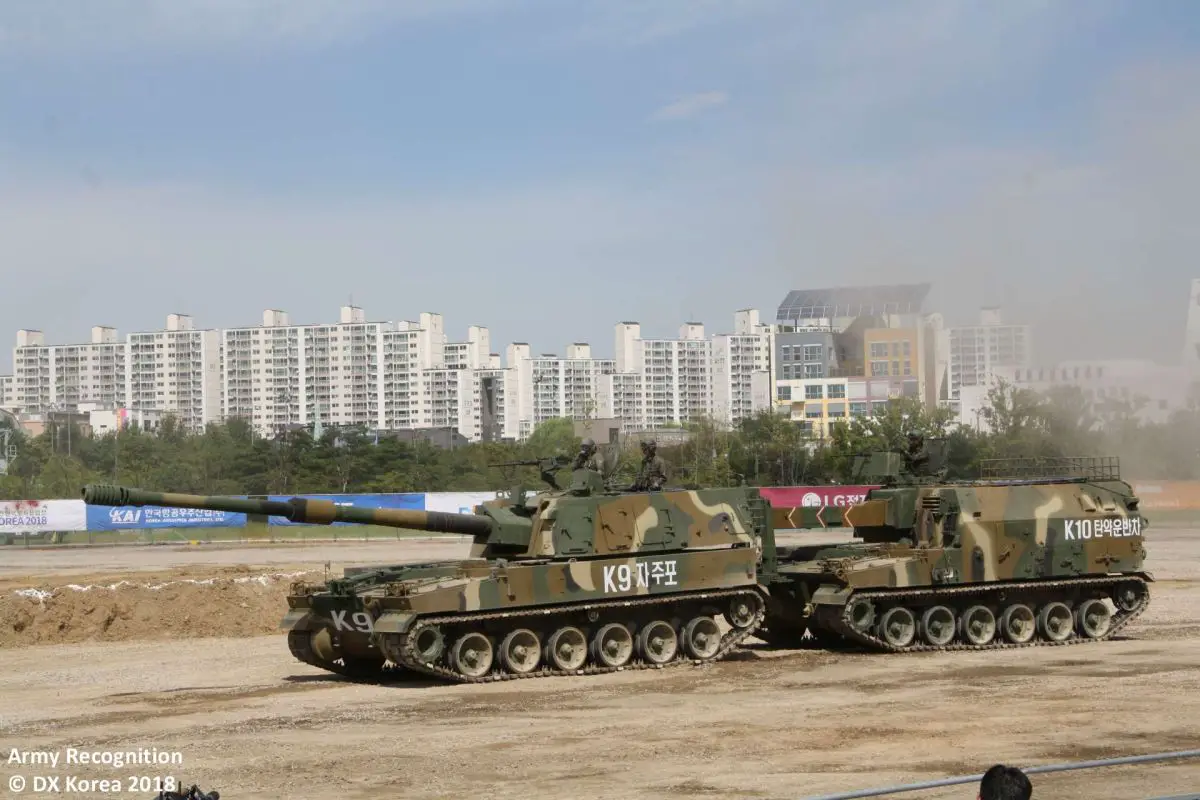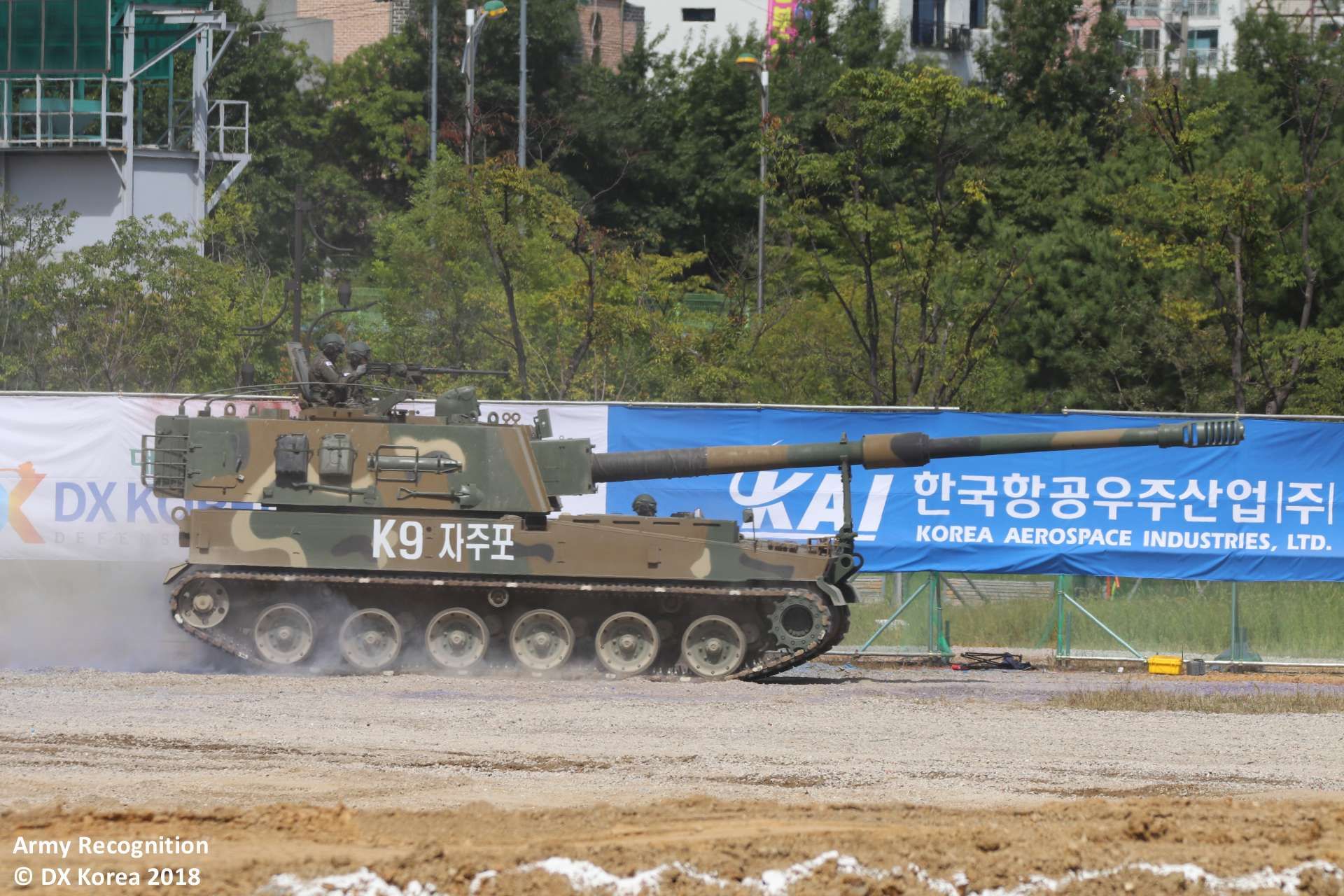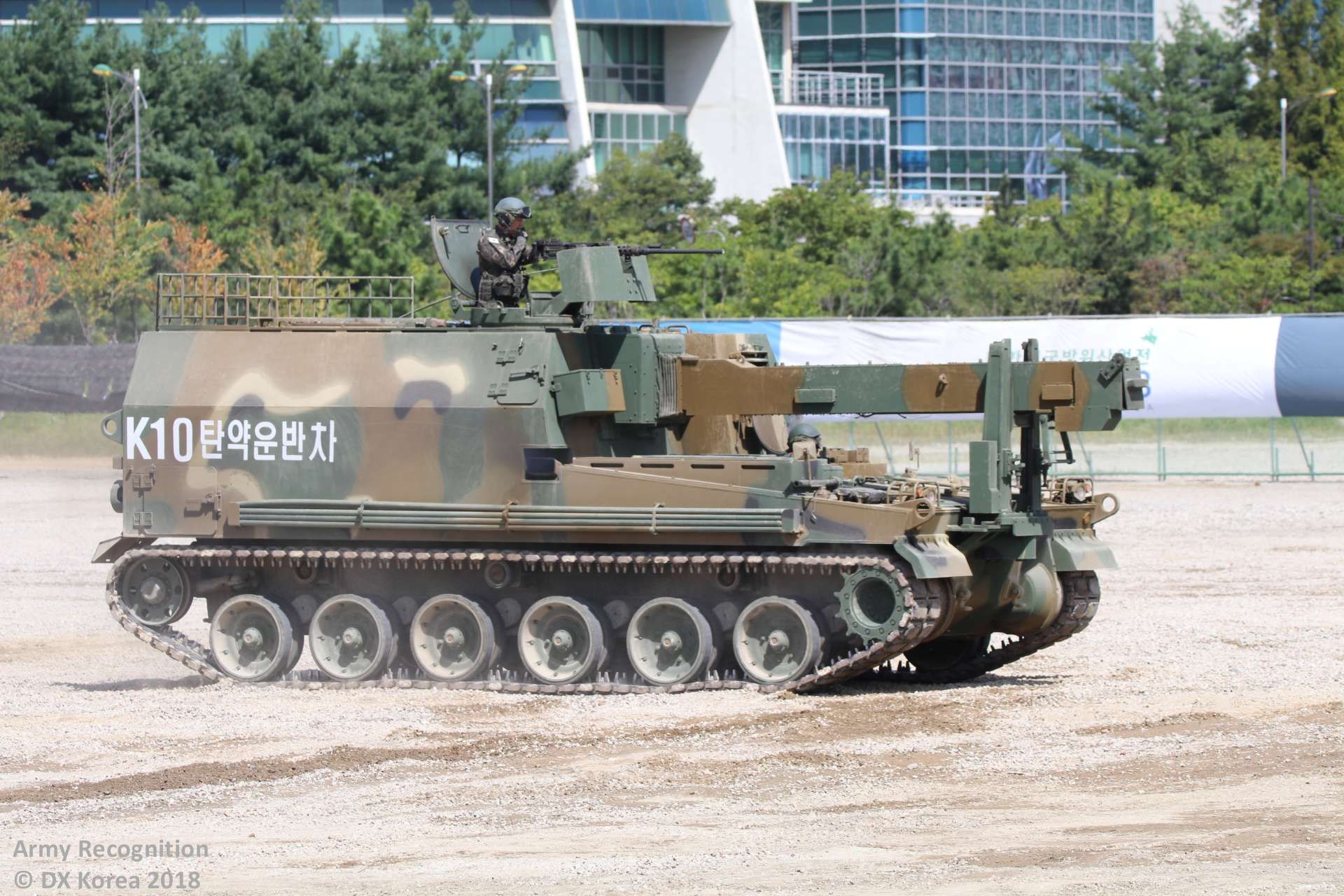Breaking news
Romania and South Korea negotiate $1 Billion contract for 54 K9 self-propelled howitzers and 36 K10 ammunition carriers.
According to Hankyung on May 27, 2024, South Korean Minister of National Defense Shin Won-sik is scheduled to visit Romania next month to support the final negotiations for Hanwha Aerospace's arms export contract, valued at 1.4 trillion won ($1,025,625,986). This visit, set for June 17th to 21st, will also include discussions in Poland to enhance defense industry cooperation with local officials. According to a high-ranking military official, Minister Shin's primary objective is to finalize Hanwha Aerospace's export deal with the Romanian government.
Follow Army Recognition on Google News at this link

The contract involves the sale of 54 K9 self-propelled howitzers and 36 K10 armored ammunition carriers, with an estimated value of 1.4 trillion won ($1,025,625,986). (Picture source: Army Recognition)
According to this article, the South Korean company Hanwha Aerospace is finalizing the detailed export provisions with the Romanian government. The contract involves the sale of 54 K9 Thunder self-propelled howitzers and 36 K10 Ammunition Resupply Vehicles (ARVs), an associated armored ammunition carrier, with the goal of signing the agreement within the first half of the year. Hanwha Group Chairman Kim Seung-yeon recently visited the company's Changwon site, encouraging employees to work towards securing the Romanian order. If the contract is successfully concluded, Hanwha Aero's defense order backlog will exceed 30 trillion won (approximately $21,978,261,000), marking a first for any Korean defense firm.
In Romania, Hanwha Aerospace held an Industry Day on May 17th, inviting numerous local defense industry figures. The company is considering holding a press conference for local media in conjunction with Minister Shin's visit next month. Viorel Manole, President of the Romanian Defense Industry Association, expressed Romania's interest in cooperating with Hanwha, stating that Romania will cooperate as much as Hanwha decides.
The company has received positive reviews locally not only for exporting weapons but also for its partnership approach, including technology transfers, local manufacturing, and joint research and development targeting the European market. Hanwha Aerospace is focused on building broad partnerships that extend beyond arms exports.
As of early 2024, the K9 Thunder self-propelled howitzer accounts for over 50% of the global market share for self-propelled howitzers. The K9 has been widely adopted due to its technical specifications, such as a high firing rate, long firing range, and effective mobility in different terrains. These attributes have made it a popular choice for modernizing artillery systems in several national armies. The market share of the K9 is likely to increase further with ongoing and future orders, as the potential export of K9 self-propelled howitzers to Romania would contribute to a growing trend among NATO member countries, with five nations, including Norway, Estonia, Türkiye, Poland, and Finland, having either procured or are in the process of procuring the South Korean self-propelled howitzers. Additionally, these systems were also exported to Australia and Egypt.

The K9 Thunder was introduced into service in 1999, providing a significant enhancement in range, firepower, and mobility compared to previous artillery systems like the K55 self-propelled howitzers. (Picture source: Army Recognition)
Approximately 1,700 K9 Thunder 155mm self-propelled howitzers have been produced to date. Its development began in 1989 as a response to North Korea's extensive artillery systems. The project was led by the Agency for Defense Development (ADD) and involved several South Korean companies, including Samsung Aerospace Industries (now Hanwha Defense). The K9 Thunder was introduced into service in 1999, providing a significant enhancement in range, firepower, and mobility compared to previous artillery systems like the K55 self-propelled howitzers. The design focused on rapid fire and quick relocation, which are crucial for modern artillery operations.
The K9 Thunder features a 155mm L52-caliber main gun capable of firing various NATO-standard munitions. Its maximum firing range varies from 18 km to 50 km, depending on the ammunition type. The howitzer can achieve a firing rate of three rounds in 15 seconds and sustain a rate of 6-8 rounds per minute. The K9 is equipped with MIL-12560H steel armor, providing protection against 155mm projectile fragments, 14.5mm armor-piercing rounds, and anti-personnel mines. Its engine, a 1,000 horsepower STX-MTU MT881 Ka-500, allows for a top speed of 67 km/h and an operational range of approximately 480 km. Advanced navigation and fire control systems enhance its operational effectiveness.
Introduced in the early 2000s, the K10 Ammunition Resupply Vehicle (ARV) shares the same chassis, powertrain, and suspension as the K9, ensuring compatibility and logistical efficiency. It is equipped with an automated ammunition transfer system that reduces the time and manpower required to resupply the K9 howitzers, thus allowing it to transfer up to 12 rounds per minute and carry 104 rounds of 155mm ammunition along with 504 units of charges. The vehicle operates with a crew of three and has advanced protection measures, including armor capable of withstanding 155mm shell fragments and 14.5mm projectiles.

The K10 Ammunition Resupply Vehicle (ARV) is equipped with an automated ammunition transfer system that reduces the time and manpower required to resupply the K9 howitzers, thus allowing it to transfer up to 12 rounds per minute. (Picture source: Army Recognition)


























